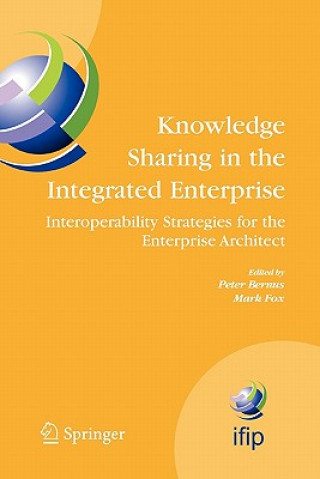
Kézbesítés
Vásárlási tanácsadó
16 105 015 könyv 175 nyelven








Összes nyelv megjelenítése (175)





Nem vált be? Semmi gond! Nálunk 30 napon belül visszaküldheti
 Ajándékutalvány
bármilyen értékben
Ajándékutalvány
bármilyen értékben
Ajándékutalvánnyal nem nyúlhat mellé. A megajándékozott az ajándékutalványért bármit választhat kínálatunkból.
Knowledge Sharing in the Integrated Enterprise
 Angol
Angol
 304 b
304 b
30 nap a termék visszaküldésére
Ezt is ajánljuk


International Federation for Information Processing§The IFIP series publishes state-of-the-art results in the sciences and technologies of information and communication. The scope of the series includes: foundations of computer science; software theory and practice; education; computer applications in technology; communication systems; systems modeling and optimization; information systems; computers and society; computer systems technology; security and protection in information processing systems; artificial intelligence; and human-computer interaction. Proceedings and post-proceedings of referred international conferences in computer science and interdisciplinary fields are featured. These results often precede journal publication and represent the most current research. The principal aim of the IFIP series is to encourage education and the dissemination and exchange of information about all aspects of computing. §For more information about the 300 other books in the IFIP series, please visit springeronline.com. §For more information about IFIP, please visit www.ifip.or.at. Enterprise Architects, in their endeavor to achieve Enterprise Integration, have limited guidance on how best to use Enterprise Models and Modeling Tools to support their practice. It is widely recognized that the practice of engineering enterprises needs a number of models, but how to maintain the relation between these models with ease is still a problem. Model interoperability is an issue on multiople counts:§- How to interchange models between enterprise modeling tools?§- How to maintain the interdependencies between models - whether they describe the enterprise on the same level (but from different points of view), or from the same point of view (but on different levels of abstraction and granularity)?§- How to maintain a coherent and evolving set of enterprise models in support onf continuous change processes?§- How to use and reuse enterprise models as a knowledge resource?§The answers to these questions are of great importance to anyone who is implementing ISO9001:2000 requirements, whether through using enterprise architecture practice or not - although it can be argued that a well executed architecture practice should satisfy ISO9001 without additional effort.§This volume attacks the problem on three fronts:§1. Authors working in international standardisation and tool development as well as in enterprise modeling research present the latest developments in semantic integration;§2. Authors who are practitioners of, or conducting active research in, enterprise architecting methodologies give an account on the latest developments and strategic directions in architecture frameworks and methodologies;§3. Authors who use or develop information integration infrastructures present best practice and future trends of this aspect of enterprise integration.§Chapters of this book include contributions to the International Conference on Enterprise Integration and Modelling Technology (ICEIMT'04), and those presented at the Design of Information Infrastructure Systems for Manufacturing (DIISM'04) Workshop. While DIISM is traditionally oriented at supporting manufacturing practice, the results have a far greater domain of applicability.
Információ a könyvről
 Angol
Angol
Kategória




 Hogyan vásároljunk
Hogyan vásároljunk




























